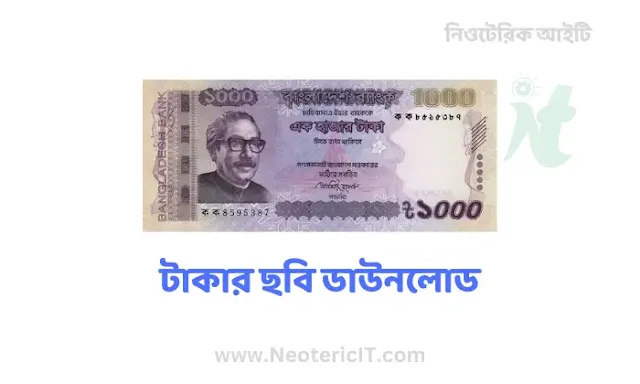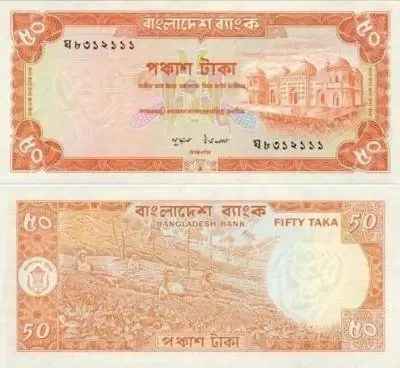500 taka pic download - 500 taka note pic download - taka pic download - 50, 100, 500, 1000 taka note pic - taka pic - NeotericIT.com
In the diverse and culturally rich country of Bangladesh, the evolution of currency notes is a fascinating story that reflects the country's historical, political and economic changes. Like many other countries, the currency of Bangladesh has undergone significant changes over the centuries. From ancient trade practices to the introduction of modern banknotes, each era has left a distinct mark on the nation's financial landscape. This article explores the fascinating history of the Bangladeshi taka note, its origins, the influence of various ruling powers and its journey to becoming a symbol of national pride and economic stability.
Ancient trade practices and the introduction of coins
Before the advent of formal currency notes, the ancient inhabitants of the Bengal region relied on the barter system for trade. Exchange of goods and services played an important role in the region's early economic activity. However, the barter system had limitations and as trade expanded, the need for more standardized forms of exchange arose.
During the Mauryan and Gupta periods (3rd to 7th century BC), the Bengal region was dominated by the dominant empires of the Indian subcontinent. The use of metal coins made of copper, silver and gold began to gain popularity as a medium of exchange. These coins had inscriptions in Prakrit, Brahmi and other ancient scripts, showing the influence of the ruling dynasty on the coins.
Medieval period and influence of foreign powers
The medieval period of Bengal saw the influx of various foreign powers, each influencing the coinage of the region. The Delhi Sultanate, the Bengal Sultanate and the Mughal Empire all played important roles in shaping the monetary system.
Under the Delhi Sultanate, copper and silver coins continued to be used, but they began to bear Arabic inscriptions. The Bengal Sultanate further developed the sophistication of coinage, introducing innovative designs and calligraphy. The minting of gold coins became more common during this time, reflecting the wealth and prosperity of the region.
During the Mughal rule, the monetary system experienced significant changes. The Mughals introduced the use of the silver rupee, a currency that would become prominent throughout the Indian subcontinent. The region's rich resources and strategic location made Bengal an important center of the Mughal economy and, as a result, a large number of Mughal coins circulated in the region.
European influence and the colonial era
The arrival of European powers in the Indian subcontinent had a profound effect on the currency of Bengal. The Portuguese, Dutch, French and British East India Company fought for control of trade routes and resources.
The rise of the British East India Company in the region gradually replaced the local monetary system with British currency. In 1825, the company established the Bengal Presidency Bank, which issued the first bank notes in the region. These early banknotes were used alongside the existing currency and bore value in Indian rupees.
With the formal establishment of the British Raj in 1858, the British government assumed direct control over the Indian subcontinent, including Bengal. The British Indian currency, based on the Indian rupee, became the official currency of the region. Banknotes of various denominations featuring intricate designs and security features were issued.
The rise of Bangladesh and the liberation war
The partition of British India in 1947 resulted in the creation of two separate countries: India and Pakistan. East Bengal (later known as East Pakistan) became a part of Pakistan and the Pakistani rupee became the official currency.
However, the economic disparity and political tensions between East and West Pakistan led to widespread discontent in East Pakistan. This eventually culminated in the Liberation War of 1971, during which Bangladesh emerged as an independent nation.
Born in Bangladeshi Taka
On March 26, 1971, Bangladesh declared independence from Pakistan and the Bangladesh War of Independence began. The war lasted nine months, culminating in the victory of Bangladeshi forces and the establishment of Bangladesh as a sovereign nation.
After independence, the Bangladesh government wanted to create a new currency that would symbolize the nation's unity and progress. On April 4, 1972, the Bangladeshi Taka (BDT) was officially introduced as the country's currency, replacing the Pakistani rupee. The word "taka" comes from the Sanskrit word "tankah", which was used to denote a unit of currency in ancient India.
The first series of Bangladeshi bank notes features iconic landmarks, historical figures and cultural symbols depicting the country's rich heritage. The designs were evidence of new national pride and aspirations for economic stability.

 Follow Google News to get the latest Neoteric IT news
Follow Google News to get the latest Neoteric IT news 
.jpeg)
.jpeg)
.jpeg)
.jpeg)

.jpeg)
.webp)
.jpeg)
.jpeg)
.jpeg)
.jpeg)
.jpeg)
.jpg)
.jpeg)
.jpeg)
.jpeg)
.jpg)
.jpeg)
.jpg)
.jpg)
.jpeg)
.jpg)
.jpeg)
.jpg)
.jpeg)
.jpg)
.jpeg)
.jpeg)
.jpg)
.webp)
.jpeg)
.jpg)
.jpg)
.png)





Please comment in accordance with the policy - otherwise your comments will not be accepted.
comment url